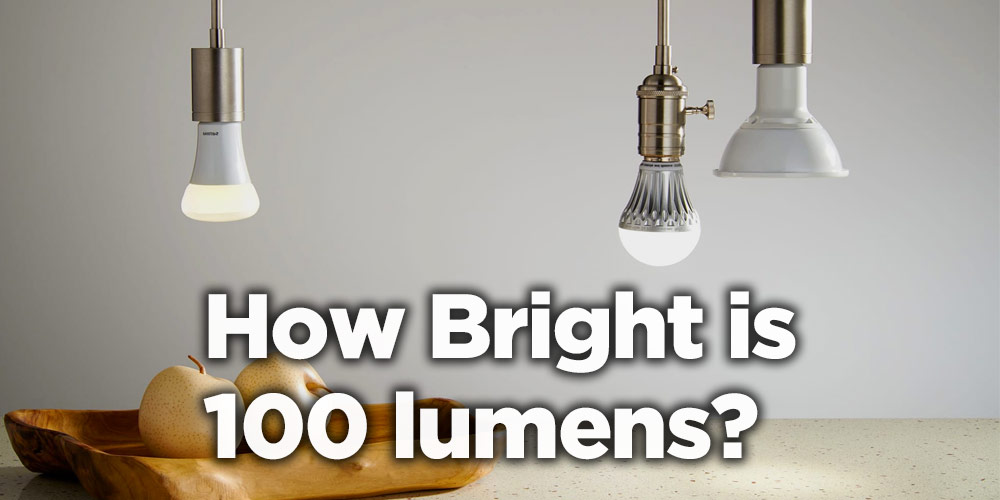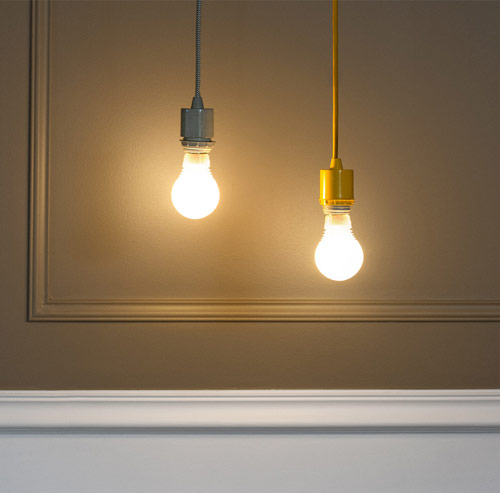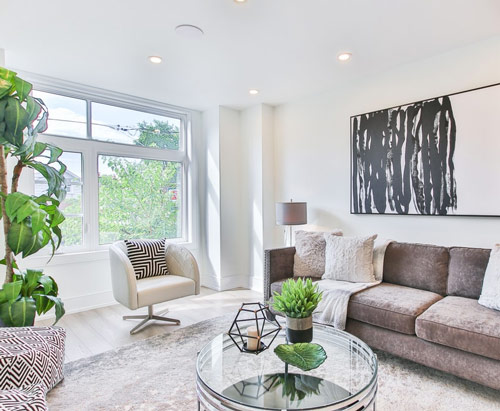
Lumens are units that measure the brightness you get from a bulb. A dim light means fewer lumens while bright light shows more lumens. This brings us to the question, what’s the difference between lumen and watt?
Lumen vs watt
A watt indicates the amount of energy a bulb uses while lumen describes the amount of light emitted from the source. In energy-efficient bulbs, the number of wattages lowers to achieve the same number of lumens. For example, a standard 60-watt bulb gives 500-700 lumens of light. Regardless of how much power you need, buying a bulb based on lumens is accurate compared to using the wattage.
While conventional lighting may indicate that higher wattage means more light, this is not always the case. With the improvements in technology, people are becoming more accustomed to measuring visible light rather than energy. If you want more lighting, you should look for bulbs with higher lumens.
How bright are 100 lumens?
 An average flashlight puts out 100 lumens while an office lighting fixture puts out about 2500 lumens – you get the picture? An ordinary 40-watt bulb emits 400 lumens of light. This means that you get 10 lumens per watt. One lumen can also be likened to the light output of a single candle. Therefore, 100-lumen can be used in urban and suburban areas to scan a small backyard, blind attackers, etc. This is good brightness for medium-sized 2x AA flashlight. The number of lumens you need for your lighting will depend on other factors like the height of the ceiling, room size, color scheme and type of lumps.
An average flashlight puts out 100 lumens while an office lighting fixture puts out about 2500 lumens – you get the picture? An ordinary 40-watt bulb emits 400 lumens of light. This means that you get 10 lumens per watt. One lumen can also be likened to the light output of a single candle. Therefore, 100-lumen can be used in urban and suburban areas to scan a small backyard, blind attackers, etc. This is good brightness for medium-sized 2x AA flashlight. The number of lumens you need for your lighting will depend on other factors like the height of the ceiling, room size, color scheme and type of lumps.
Let’s look at the lumen brightness scale to help you understand the brightness of 100 lumens.
One lumen of light is barely enough to light a trail in the middle of the night. Also, it’s too low to help you read a book comfortably. Ten (10) lumens can be enough for backpacking, camping, and hiking activities. It’s also bright enough to fix a car engine, emergency preparedness, or eat a meal during a blackout. But when your surroundings are well lit, 10 lumens are barely noticeable. If you want to light your way to avoid those potholes, you need at least 30 lumens. Keep in mind that your eyes will always adjust to dim and brightness.
A bicycle lamp emits about 300 lumens. This light is enough for searching for people or objects 50 meters away. Additionally, it can comfortably light a small room. For those who want to light large areas like a construction site or factory space, then 1000-3000 lumens would be enough. A decade ago, 100-lumen flashlights were considered bright enough for soldiers and police officers. But today, most flashlights go as high as 1000 lumens. The best way to know what 100 lumen means is to buy a flashlight with light settings. As you shop for bulbs, be sure to compare the lumens to ensure you get the right amount of light.
How many watts of bulb do we need to give 100 lumens?
A few years ago, there were only a handful of lighting options. Today, there’s a myriad of bulb options. Apart from the traditional incandescent bulbs, you’ll find LEDs, Halogens, and CFLs. They vary in terms of watts and the number of lumens. As a consumer, you should understand the difference to help you make a well-informed decision.
- 100 lumens in LEDs give 2-4 watts
- 100 lumens in Incandescent bulbs give 20-25 watts
- 100 lumens in CFL bulbs give 5-6 watts
On average, one watt of compact fluorescent gives 67 lumens while an incandescent bulb produces 14 lumens per watt. Some energy-efficient LEDs now produce up to 120 lumens per watt. Incandescent bulbs have higher watts per lumen than LEDs and CFLs. The problem with incandescent bulbs is that they only use 10% to produce light and the other 90% to generate heat. With low energy LEDs, you get more light with less power consumption.
Is 100 lumens bright enough to light up a living room or backyard?
 To know how many lumens you need in your living room or backyard, try walking at night. Can you notice anything in front of you? Of course, you may need a flashlight. This is where lumens come in. For basic household outdoor activities, you need 20-150 lumens. If you have a big backyard (100 meters), you need 160-200 lumens of light. Generally, you can use 100 lumens to light the path around your house.
To know how many lumens you need in your living room or backyard, try walking at night. Can you notice anything in front of you? Of course, you may need a flashlight. This is where lumens come in. For basic household outdoor activities, you need 20-150 lumens. If you have a big backyard (100 meters), you need 160-200 lumens of light. Generally, you can use 100 lumens to light the path around your house.
You may have to consider other requirements like motion sensor lights, step lights, etc. Another determining factor is how dark or bright you need your backyard. The idea is to ensure the lumens you use makes you enjoy your space at night.
To know the number of lumens you need for your living room, you should calculate the square footage. Unlike the dining room or the TV room, the amount of lighting required in the living room will depend on several factors. If you have a square room 10-feet wide and 10-feet long, then the room is 100sq ft. Let’s say you want to light the room with candles. How bright can the room get when a candle is one foot away from the source? For a 100-sq. ft living room, you need 1000-2000 lumens which are equivalent to 10-20 foot candles. A general rule of thumb is to allocate 30 lumens for 1 square foot.
The number of lumens will also be determined by the color of the walls and fixtures. And if the ceiling is 8-feet high, you may need an additional 10 lumens per square feet. But this boils down to your personal preference. Do you want to install dimmers to set the light at your desired level? If you use the living room for reading, you may have to brighten specific locations.
To get this right, you should be sure of the different spaces you want to enhance the lighting. Of course, you don’t need a lot of luminosity in your living room. Check whether there’s big furniture or a desk. Do the kids like to spend a lot of time there? If that is the case, you need a lot of lighting.
Considering that you need 10-20 lumens of lighting per square feet, 100 lumens can hardly light your living room. However, you can install many bulbs that produce 100 lumens until you reach the required amount of lighting.
If you’re interested in the quality of light, its time you start thinking about lumens. Once you understand the intensity of light, you can easily know the best lighting for your home and yard.
